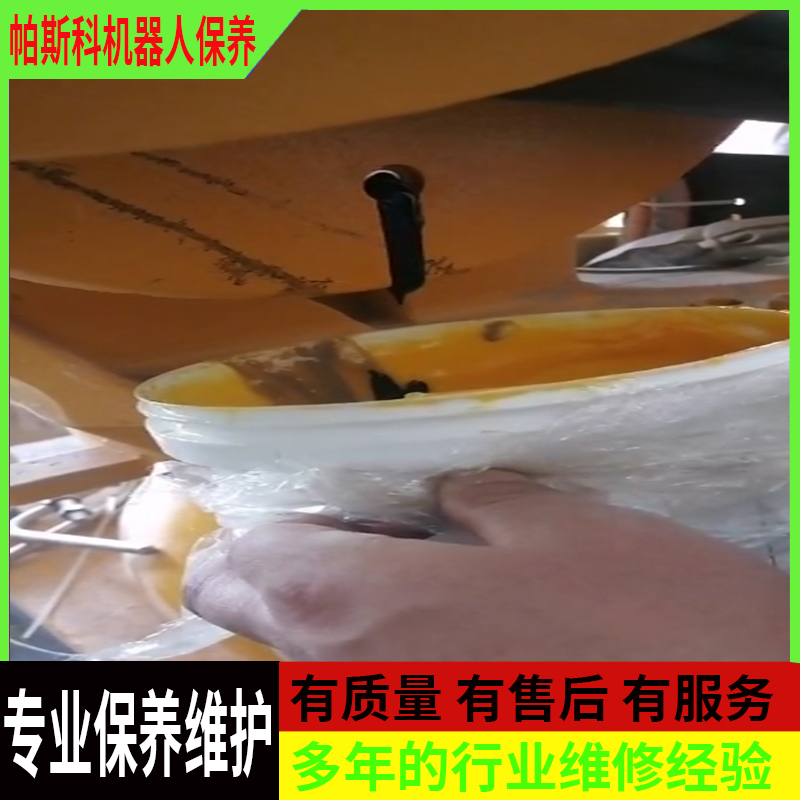
码垛机器人的保养手册通常涵盖了多个关键方面,以确保机器人的长期稳定运行和延长使用寿命。以下是一份简化的码垛机器人保养手册的概要:
一、日常保养
二、定期保养
三、专业维护
四、保养记录
请注意,具体的保养周期和内容可能因机器人的型号、使用环境和生产任务等因素而有所不同。因此,在实际操作中,建议参考机器人的使用说明书和制造商的保养指南,以确保保养工作的准确性和有效性。同时,如果遇到无法解决的问题或需要更专业的维护服务,请及时联系专业的机器人维修服务商。
Maintenance manuals for palletizing robots usually cover several key aspects to ensure the long-term stable operation and extended service life of the robot. Here's a rundown of a simplified palletizing robot maintenance manual:
1. Daily maintenance
Cleaning: Wipe the surface of the robot with a soft, dry cloth every day or after each use, making sure there are no dust, oil, or other impurities. Special attention is paid to cleaning the robot's sensors, lenses, and other critical components to ensure that they work properly.
Inspection: Regularly inspect the robot's various parts, including robotic arms, conveyor belts, sensors, etc., to ensure they are intact and tightly connected.
2. Regular maintenance
Lubrication: According to the use of the robot and the manufacturer's recommendations, lubricate the key parts of the robot regularly, such as bearings, guide rails, etc. Use appropriate lubricants and ensure that the lubrication system is clean and unobstructed.
Electrical inspection: Check whether the electrical wiring and cables are intact to ensure that there is no aging or breakage. At the same time, check whether the power plug and socket are in good contact to avoid malfunctions caused by electrical problems.
Calibration and commissioning: The robot is calibrated and debugged regularly to ensure that its accuracy and performance are optimal. This includes checking parameters such as the robot's trajectory and gripping force.
3. Professional maintenance
Deep cleaning: Perform regular deep cleaning, which involves opening the robot's case and removing dust and debris from the inside. This requires the use of specialized cleaning tools and materials, as well as ensuring that the robot's internal parts are not damaged during the cleaning process.
Replace wearing parts: Replace wearing parts, such as sensors, batteries, etc., regularly according to the use of the robot and the manufacturer's recommendations. This helps to ensure the stable operation and long service life of the robot.
Fourth, maintenance records
Record the maintenance situation: Every time the maintenance is carried out, the date, content, replaced parts and other information of the maintenance should be recorded. This helps to track the robot's maintenance history, identify potential problems in time, and provide a reference for future maintenance work.
Please note that the specific service interval and content may vary depending on factors such as the model of the robot, the environment in which it is used, and the production task. Therefore, in actual operation, it is recommended to refer to the robot's instruction manual and the manufacturer's maintenance guide to ensure the accuracy and effectiveness of the maintenance work. At the same time, if you encounter problems that cannot be solved or need more professional maintenance services, please contact a professional robot repair service provider in time.

扫一扫关注公众号